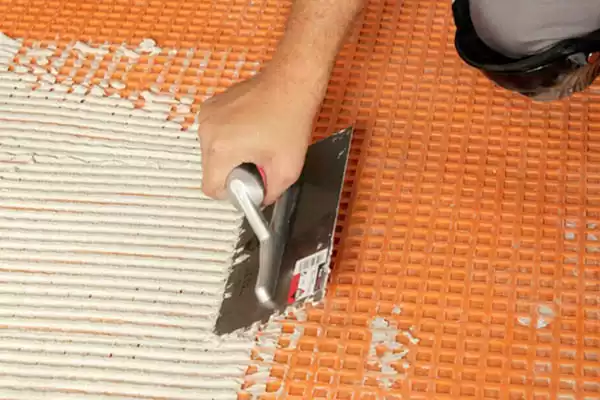When it comes to applying materials like mortar, adhesive, or plaster, the trowel is a key tool in ensuring a professional finish. However, achieving the best results isn’t just about the type of trowel you use; it also heavily depends on the angle at which you hold it. The angle of the trowel determines the thickness of the material applied, the smoothness of the surface, and the overall quality of the work. So, what is the correct angle to hold a trowel, and how does it affect different types of applications?
1. The Importance of Trowel Angle
The angle at which a trowel is held while applying materials such as tile adhesive or plaster can dramatically impact the outcome of a project. Holding the trowel at the correct angle ensures that the right amount of material is applied evenly across the surface, which is crucial for both the durability and appearance of the finished product. An incorrect angle can lead to uneven application, wasted materials, and a less professional finish.
2. Typical Angles for Different Applications
The optimal angle for holding a trowel can vary depending on the material being applied and the desired thickness of the layer. Here’s a breakdown of typical angles for various applications:
- Applying Tile Adhesive: When spreading tile adhesive, it is generally recommended to hold the trowel at a 45-degree angle. This angle allows the notches of the trowel to create uniform ridges in the adhesive. These ridges are important because they ensure that the tiles adhere properly to the substrate, providing a strong bond that can handle the weight and usage of the tile over time.
- Spreading Plaster or Mortar: For applications involving plaster or mortar, a flatter angle, such as 30 degrees, is often more appropriate. This lower angle helps achieve a smoother finish and ensures that a sufficient amount of material is applied to cover the surface effectively. A flatter angle allows the material to spread more evenly, reducing the chance of air pockets or gaps that can compromise the structural integrity of the application.
- Finishing Concrete: When finishing concrete surfaces, a very low angle, nearly parallel to the surface (around 10-15 degrees), is typically used. This angle helps in flattening and smoothing the surface, eliminating any high spots and filling in low spots for a level finish. It’s especially important during the final stages of concrete finishing to ensure a polished and professional look.
3. Adjusting the Angle for Different Conditions
While the above angles are good general guidelines, the specific angle you hold a trowel at may need to be adjusted based on other factors, such as the type of material, the condition of the surface, and personal technique.
- Material Consistency: Thicker, heavier materials may require a steeper angle to apply effectively, while lighter, more fluid materials may spread better at a lower angle. Adjusting the trowel angle based on the material’s consistency can help control the thickness of the applied layer and prevent slumping or uneven coverage.
- Surface Type: The condition of the surface being worked on can also dictate the appropriate trowel angle. Rough or uneven surfaces may necessitate a steeper angle to ensure that the material fills all gaps and adheres properly. Conversely, smoother surfaces might only require a slight angle to apply a thin, even coat.
- Personal Technique and Comfort: Finally, personal comfort and technique play a significant role in determining the correct trowel angle. Experienced tradespeople often develop their own preferred methods based on years of practice, which can influence the angle at which they hold their tools. Beginners need to start with standard angles but remain flexible and adjust based on what feels most natural and effective for them.
4. Practice Makes Perfect
As with many aspects of construction and finishing work, practice is key to mastering the correct trowel angle. By practicing with different materials and on various surfaces, one can develop a feel for the proper angle needed to achieve the desired outcome. It’s also helpful to observe and learn from more experienced professionals, who can offer valuable insights and tips on technique.
Conclusion
The angle at which you hold a trowel is a critical factor in determining the quality of your work, whether you’re tiling a bathroom, plastering a wall, or finishing a concrete slab. Understanding and mastering the correct trowel angle for different applications can greatly enhance the final appearance and durability of your projects. By experimenting with various angles and adjusting based on material, surface, and personal technique, you can achieve professional results every time.
Post time: Sep-03-2024







